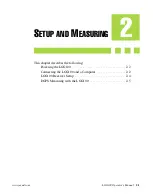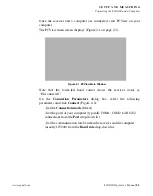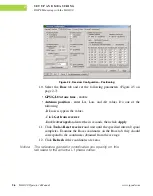
3-4
LGG100 Operator’s Manual
www.javad.com
O P E R A T I O N
Clearing the NVRAM
3
3.
Navigate to the location of the new Option Authorization File. OAFs have
.jpo extension and are unique to each receiver (Figure 3-3).
Figure 3-3. Load OAF
4.
Select the appropriate file and click
Open
(Figure 3-3). The new receiver
option loads onto the receiver and the Option Manager table updates.
5.
When finished, click
Exit
on the Option Manager screen, and then click
File->Disconnect
to prevent conflicts with serial port management.
Clearing the NVRAM
The receiver's Non-Volatile Random Access Memory (NVRAM) holds data
required for satellite tracking, such as almanac and ephemeris data, and receiver
position. The NVRAM also keeps the current receiver's settings, such as active
antenna input, elevation masks and recording interval, and information about
the receiver's internal file system.
Even though clearing the NVRAM is not a common (nor normally a
recommended) operation, there are times when clearing the NVRAM can
eliminate communication or tracking problems. Clearing the NVRAM in your
LGG100 can be interpreted as a “soft boot” in your computer.
After clearing the NVRAM, your receiver will require some time to collect new
ephemerides and almanacs (around 15 minutes).
Clearing the NVRAM of your receiver will reset your receiver settings to
factory default values.
In addition, the NVRAM keeps information about the receiver file system. You
can clear the NVRAM using PCView.
Содержание LGG100
Страница 2: ......
Страница 6: ...iv LGG100 Operator s Manual www javad com Notes ...
Страница 8: ...vi LGG100 Operator s Manual www javad com Notes ...
Страница 24: ...1 10 LGG100 Operator s Manual www javad com Notes ...
Страница 50: ...4 8 LGG100 Operator s Manual www javad com Notes ...
Страница 58: ...B 6 LGG100 Operator s Manual www javad com APPENDIX Specifications B ...






























